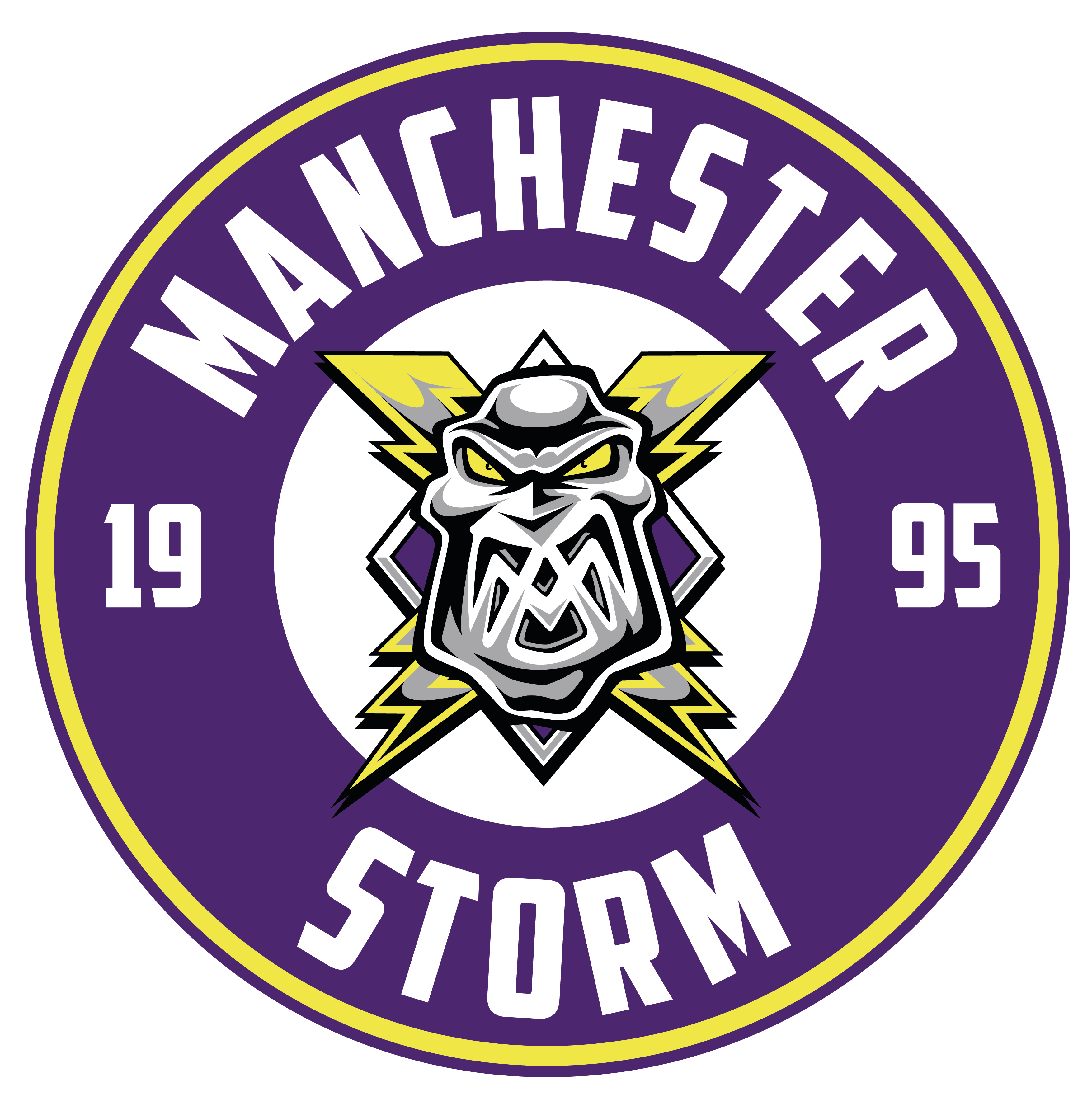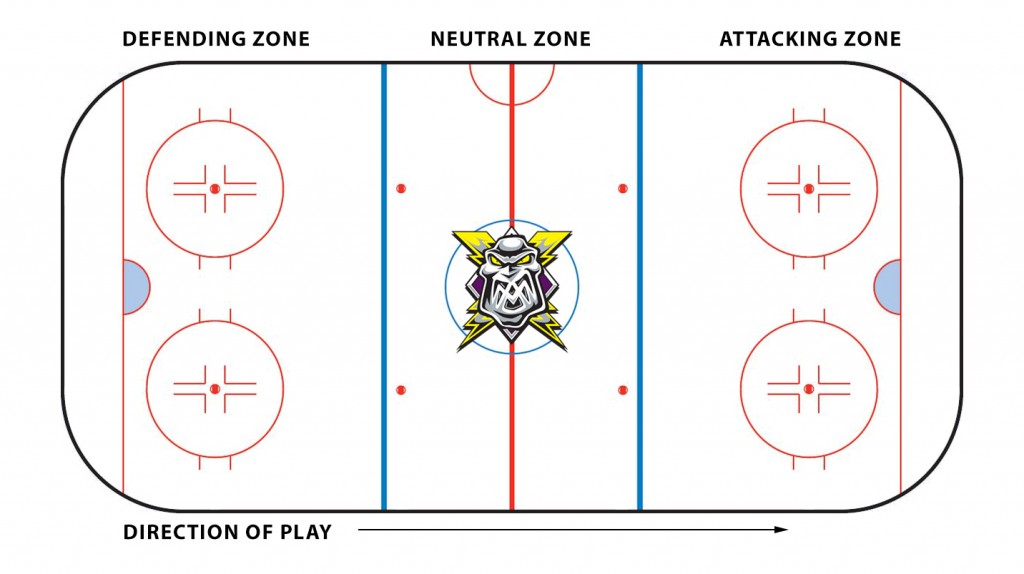What Is It All About?
Although Ice hockey is the fastest team game in the world, the basic rules are fairly easy to understand. Like any sport, the official rulebook runs to many pages. Let's just look at the main rules… all you’ll need to enjoy the game.
Games
Each match is played in three 20-minute periods, with a 15-minute break between periods to allow the Zamboni, called so because it was first developed by Frank Zamboni in 1949, to resurface the ice. Importantly, when play stops, the clock is also stopped – every second counts!
Each team can have a maximum squad of 20, including two goalkeepers. Although only six players from each team can be on the ice at any one time, substitutions can be made at any point (even during active play).
The ice hockey playing area is marked on the ice rink’s base, with ice built up on top of that to a total thickness of around 3/4 – 1 inch. The playing area is surrounded by white boards just over a metre high. Protective glass (Plexi) on top of the boards allows fans to watch the match safely.
The puck, made of vulcanized rubber, is 3″ in diameter, 1″ thick, and weighs about 6oz. It is frozen before the game to reduce its bounce and allow it to slide across the ice easier and faster. Some of the game's hardest shooters send the puck towards the net at over 90 mph, with elite shooters topping over 100 mph. So keep your eye on the puck as much as you can!
Hockey sticks are usually made from wood, generally northern white ash or rock elm. Carbon fibre, fibreglass, and Kevlar are some of the other materials used. Some sticks are one piece; others have removable blades, but all are very light.
The Playing Zones & Rules
The ice is marked with a series of blue and red lines. The centre red line divides the ice into two halves, while the blue lines separate the ice into three equal ‘zones’ – defending, neutral, and attacking zones.
Goals are scored by striking the puck into the opposing team’s net. If the puck accidentally comes off another player (attacker or defender), the goal stands. However, if an attacking player deliberately kicks or strikes the puck with any part of the body (other than the stick) into the net, the goal is disallowed. A goal is also disallowed if the puck comes off an official first.
There are only two principal rules in ice hockey – offside and icing.
Offside
Offside is a relatively simple concept. An attacking player isn’t allowed to enter the opposition’s defending zone ahead of the puck – so keep an eye on the defence’s blue line.
Icing
‘Icing’ occurs when a player strikes the puck from his own half across the opposition’s goal line (red) without it deflecting off another player (including a goalkeeper).
Face-Offs
Face-offs are used to start periods of play and to restart play (for example, after a goal or after an offside ruling). During a face-off, two opposing players stand opposite each other roughly one stick’s blade apart, and the official then drops the puck between them.
The blue centre spot is used to ‘face-off’ at the beginning of each period, or following a goal. The red face-off spots are used in a variety of other circumstances. For example, after a typical offside, the face-off takes place on the nearest face-off spot in the central, neutral zone.
In the event of the puck leaving the ice, two imaginary lines are drawn along the length of the ice between the face-off spots. A face-off then takes place at a point closest to where the puck left the ice.
Contact & Fighting
Ice hockey has a reputation as an aggressive sport, and you’d be forgiven for thinking that more punches are thrown on a rink than in a boxing ring.
The rules are explicit when it comes to contact during play (although the speed of the game can make it tough to apply). Contact from the side and front is generally OK, though deliberate checking from behind will usually result in a penalty.
Tripping and ‘boarding’ (causing another player to violently hit the rink’s walls) are also banned, as is the high use of the shaft of the stick. Elbowing, charging, and using the shaft of the stick to check an opponent (‘cross-checking’) will also result in a penalty.
Fighting (or ‘roughing’) is subject to the most severe penalties, depending on who started the fight – a player who starts ‘fisticuffs’ is often dealt with more harshly than someone retaliating to another player’s punches.
Officials & Penalties
In a game of hockey, there is a referee (orange armbands) and 2 linesmen. The referee is in charge of the match and has final decision on any matter.
However, the referee is also assisted by linesmen (on the ice) and goal judges (behind each goal) who are particularly concerned with offside and goal rulings respectively.
Penalties
The referee and his assistants are responsible for applying the rules and deciding on penalty decisions. Penalties range in severity from a minor penalty, which often results in as little as two minutes off the ice for the offending player, up to being sent off for the balance of play (in the case of Game Misconduct and Match penalties – e.g., for fighting). During a game in which only six players from each team are on the ice at any one time, a one-man advantage can make quite a difference.
Common Hockey Terms Quick Guide
BACK CHECK: To hinder an opponent heading toward and into the defending zone.
BLUE LINES: The two one-foot wide blue lines which extend across the ice at a distance of 60 feet from each goal. These lines break up the ice into attacking (offensive), neutral and defending zones.
BODY CHECK: Use of the body on an opponent. It is legal when the opponent has possession of the puck or was the last player to have touched it.
BUTT-ENDING: To hit an opponent with the end of the stick farthest from the blade. It is illegal and results in a penalty.
CREASE: The area directly in front of the goaltender. It is four feet wide and eight feet long and marked off by red lines and is painted light blue. Offensive players who do not have possession of the puck may not enter.
DEKE: To fake an opponent out of position.
FACEOFF: The dropping of the puck between one player from each team to start or resume play.
FORECHECK: To check an opponent in his end of the rink, preventing an offensive rush.
FREEZING THE PUCK: To hold the puck against the boards with either the stick or skate to get a stoppage of play.
GOAL LINE: The red line which runs between the goal posts and extends in both directions to the side boards.
GOAL MOUTH: The area just in front of the goal and crease lines.
HAT TRICK: The scoring of three or more goals by a player in one game. A natural hat trick occurs when a player scores three consecutive goals.
ONE-TIMER: Shooting the puck directly after receiving a pass. The offensive player starts his backswing while the puck is on its way to him and tries to time his swing with the arrival of the puck.
PENALTY BOX: The area opposite the team benches where penalized players serve time.
POWER PLAY: A power play occurs when a team has a one- or two-man advantage because of the opponent's penalties.
PULLING THE GOALIE: When one team replaces its goaltender with an extra skater. This can occur when a team trails, usually by one goal, in the final minutes of a game. It is a high-risk attempt to tie the game.
SAVE: A shot blocked by the goaltender, which would have been a goal if not stopped.
SCREENED SHOT: Occurs when a goaltender's view is blocked by players between him and the shooter.
SLAP SHOT: Hitting the puck with the blade of the stick after taking a full backswing.
SLOT: A prime scoring area located between the faceoff circles and in front of the goal.
SPLITTING THE DEFENSE: The player with the puck attempts to squeeze between the opponent's defensemen.
STICK HANDLING: To control the puck along the ice.
TOP SHELF: Term used to describe when an offensive player shoots high in an attempt to beat the goaltender by putting the puck in the top part of the net.
WRAPAROUND: When a player skates from one side to the other of the goal, from behind the goal, and tucks the puck into the other side of the goal before the goaltender recovers to be in position.

